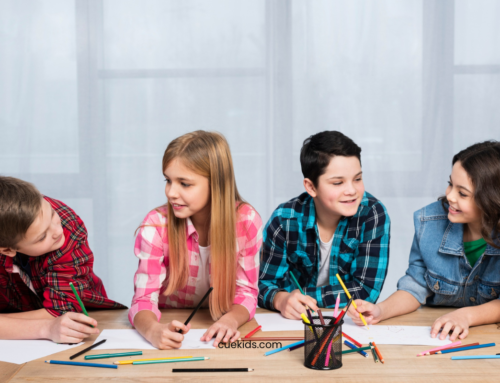Parenting in this highly complex, competitive, and digitalized world is no less than a science. While Learning, unlearning and relearning is a huge part of the parenting syllabus knowing your child’s interaction style can be a great asset to your peace. Understanding your child’s interaction style will help you become a better communicator and will give your child a safe space to express their style, feel understood and improve their social skills.
There are four basic interaction styles of children we will see each one of them below and make an attempt to observe and understand our children:
Easy Going:
These children are calm, happy, adapt easily, have regular sleeping and eating habits, have a positive mood, and are interested in new experiences. They interact easily with people and new situations.
Slow to warm up:
These children tend to stay on the sidelines. They are hesitant to start interactions and are more comfortable responding to other people during talk or play. They do start interacting and initiating more once they are comfortable in the situation. Likewise, they may need repeated opportunities to warm up. They may exhibit initial shyness or withdrawal but gradually warm up and become more comfortable over time. They often require patience and support to help them feel secure and build trust in new social interactions.
Passive:
These children either allow things to happen or accept what other people decide without trying to change anything. Passive children also may not initiate interactions and therefore will spend most of their time playing on their own.
“My way”:
These children tend to have their own way that they want things to be done. They may have an intense reaction if you want to change it. These children don’t tend to initiate social interactions or join in with others or follow another’s lead. A lot of the time they are easygoing, but then you will encounter a situation where they become inflexible, and it can be around a certain activity but not all activities.
Now let’s see a few interaction styles that parents have and adapt with their children. We will also see how does it look in day to day behavior:
Know more about Parenting – Child Bonding sessions
Director:
Directs their child play by doing most of the talking and telling their child what to do and how to do it (e.g. while making a pizza, the director will choose the toppings and tell their child where to put them). While you as a Parent might think it is your duty to guide your children and that’s why you have to tell them what to do but directing them all the time can take away your child’s autonomy, and they might end up feeling controlled.
Having said that, being a directive parent has its own benefits if it is practiced correctly and in moderation, as it gives your child a sense of security that you as the parent are there to back them up.
Tester:
A parent with this style, asks a lot of questions to see what their child has learned (e.g., what is this; what color is the truck; how many wheels does it have?). This Interaction style can make children feel under pressure all the time and can also result in them feeling that you as a parent do not trust them which can create distance and barriers between the two of you.
Even though we have discussed what could go wrong if you test your children too much the silver line of having this interaction style is that if you use the testing method in the right place a tester parent might not always be bad if all they are doing is questioning the child’s understanding of a subject, not making the child feel judged.
Entertainer:
An entertaining interaction style is where the parent does most of the talking and playing their child is often the spectator (e.g., uses silly voices and plays with the doll while their child watches. This style can be great to get children to open up to you and can make you a little more approachable. However, adapting just this style independently can make children’s attitudes too casual towards you as a parent.
Rescuer or Helper:
Jumps in too quickly to help their child (e.g., does up their zipper before the child asks for help or tries it on his own). This style can make your child feel extremely secure and protected by you, and it also helps understand children that they have the back of their parents.
Even though parents do it out of care and concern it could make the child too dependent and used to the attention which sometimes when they don’t receive from other people the children are not able to take it very well.
Too quiet or watcher:
Parents with this interaction style watch their children playing from a distance. They may make comments as they watch their children play. These parents intervene only when there is an emergency otherwise they are just spectators. This style can be a little risky and can work as both a boon or a bane. It does encourage autonomy among children but at the same time, there are chances that your child might feel that they are all on their own. This could sometimes result in the child feeling lonely.
Tuned in or Responsive:
Studies show that this interaction style of parents works the best with almost all interaction styles of children. These parents give their children a chance to start an interaction and then join in or respond with interest. These parents raise children who understand boundaries better and develop good communication skills.
Know more about our Public Speaking Course for Kids
Even though Interaction styles are very subjective, identifying and knowing them can make communication a lot easier between you and your children. Deciding on your interaction style and identifying your child’s natural interaction style will not only help your children with their social and people’s skills, but also will foster their growth, self-esteem, and confidence. Let us know what is your and your child’s style of interaction!






[…] This figure goes up to 11 hours for older students, so it’s really no surprise our students’ communication skills are lacking. Communication is a skill which will be required in almost all the […]
[…] social and situational factors that are essential for developing expressive behavior and concrete parental communication patterns to build up parent-child […]